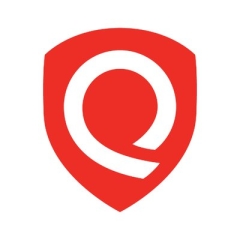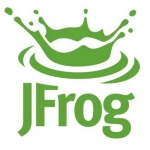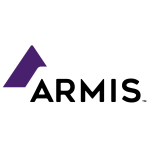What is our primary use case?
I am working as a senior security analyst. I provide enterprise vulnerability management solutions. CyberSecurity Asset Management helps us categorize all the assets and products. We can see the current software assets and the software or product lifecycle. We can see details about the end-of-life or the end-of-support in CyberSecurity Asset Management.
We create customized tags for the assets. In my environment, there are IT servers and OT servers, so we need to customize the tags based on the servers.
We can deep dive into asset inventory and check the external attack surface. We do attack surface management for the servers that are external or public-facing servers. We need deep investigations of assets to see if there is any vulnerability or suspicious activity in the server. For that purpose, I utilize the Qualys CSAM module.
How has it helped my organization?
It is able to discover assets or servers that are public-facing. For example, if there is a domain in the organization with a lot of external or public IPs, and these IPs are being used for an e-commerce website or any kind of website, hackers would want to hack these websites using ransomware. They might also do a DDoS attack to take down these websites. For such websites or web servers, we need such a module so that we can proactively gather any vulnerabilities that can be exploited and take the required steps to mitigate them before exploitation.
Qualys CSAM has saved a huge amount of time and manual effort. Features like Asset Purge Rule and dynamic tags have reduced a lot of time and manual effort of the team. In Qualys CSAM, we can get the EASM module. We can integrate CSAM or ESAM with any kind of ticketing tool, such as ServiceNow. When integrated with a ticketing tool such as ServiceNow, a vulnerability incident is created in ServiceNow for any critical or high-severity vulnerability. The incident is assigned a remediation owner. We just need to investigate whether the vulnerability is a true positive or a false positive and if remediation has been done or not. Previously, these all things had to be done manually, but now, we have automated them using Qualys CSAM. It has saved a lot of time and improved vulnerability discovery and asset segmentation in our estate.
We are able to identify two things. The first one is the vulnerability level or risk factors. The second one is the product life cycle, which is also important, so we can determine if a product is end-of-life or end-of-support. If it comes under the end-of-life or end-of-support category, we need to check with the vendor team, and we need to ask for possible workarounds. Otherwise, we can go to the project team and tell them to upgrade the product or operating system. There is a risk factor when a product is end-of-life or end-of-support. It becomes a vulnerable product. This is an additional benefit that we get, and we can ask the vendor or the project team to mitigate the issues.
When I need to prioritize external or internal facing servers, I use TruRisk Scoring. It is very effective. When I need to prioritize vulnerabilities, there are a lot of attributes that I need to keep in mind such as CVSS score, severity, etc. There are a lot of factors, so when I need to determine the top ten vulnerable servers, I use TruRisk Scoring. It is very helpful.
We have implemented cloud agents and deployed specific sensors. In our environment, we have on-premises servers and Azure and AWS clouds. We have implemented cloud agents and designed the configuration profile for those cloud agents. In Qualys CSAM, we can visualize if the cloud agent is active or not and if the scan frequency is working fine or not. We can monitor these from the Qualys CSAM module. When we implement the Asset Purge Rule on-premises or on cloud servers, there should be two sources in Qualys CSAM. One is the IP-based source, and the second one is the agent-based source. They are also monitored by Qualys CSAM. We can generate a report in Excel or CSV format, and by using the report, we can do the risk assessment and prioritize things.
What is most valuable?
I have four years of experience in cybersecurity, and I have used a lot of tools. Qualys CyberSecurity Asset Management has some advantages over others.
The first one is a feature called dynamic tag. When you implement a dynamic tag using a query, you do not need to manually tag all the servers. It categorizes all the servers that come under that query. The tagging part is automatically done within a few minutes. It reduces the effort.
The second feature is a feature called Asset Purge Rule. For example, there might be some servers or products that have not been used for the last 90 or 120 days. If they are still being reported in Qualys, it will be difficult to prioritize the servers or products to determine the top ten vulnerable servers or products. Previously, if we wanted to purge those assets or remove them from scanning, we had to do that manually, whereas Qualys CyberSecurity Asset Management provides a feature for that. We do not need to do anything from our side. A server older than the last 90 days will automatically get purged or removed from the account or scanning scope. Whenever we generate the scan report, there will be only assets or servers that are reporting in Qualys. The ones that are not reporting are automatically purged. This is known as data sanitization or vulnerability report sanitization. This is done by Qualys CSAM through the Asset Purge Rule feature. These are its core features for me.
What needs improvement?
In Qualys CSAM, there is a module called EASM. One improvement that they can make in the EASM module is the scan frequency. After EASM is configured the first time, it allows you to do the complete configuration, but if you want to reconfigure it, it will not ask or provide any option for scan frequency. For that, you need to raise a case with Qualys and talk to the Qualys team.
It only allows us to add the domain. There are only certain criteria that we can use to create a new profile inside EASM. I know that EASM is a new module in Qualys, and it is improving day by day, but it currently does not have the same configuration area that CSAM has. In the future, I hope it will be improved so that we are able to handle the configuration of EASM on our own. We do not have to raise any kind of vendor ticket or Qualys support ticket for that. Mainly, the configuration area needs improvement. Currently, we do not have all the rights to do the configuration. For any critical change, we cannot wait for the vendor to resolve the ticket. Just like CSAM, we should be able to do the configuration on our own in EASM.
For how long have I used the solution?
I have been using it for two years. I have been using it since 2022.
What do I think about the stability of the solution?
It is stable. I would rate it an eight out of ten for stability.
What do I think about the scalability of the solution?
It is scalable. I would rate it a ten out of ten for scalability.
It is being used in multiple locations such as India, Germany, and the UK. As of now, there are 15 users. In the future, we will onboard more.
Which solution did I use previously and why did I switch?
I was previously working on other projects where I used Tenable Nessus and Rapid7.
I joined this project about two years ago. It was a new project, but I knew the advantages of Qualys. I have done certification in Qualys. It was the VMDR or Vulnerability Management Detection and Response certification. At that time, I got to know that Qualys has a lot of advantages. I knew that if we could implement this solution, it would be helpful to prioritize the vulnerabilities and vulnerable servers and products in our overall estate. That is why we switched and started implementing Qualys in the organization.
Overall, with Qualys as a tool, not only CSAM, we can do everything. We can do on-premises vulnerability scanning and cloud agent scanning. If we want to do security policy compliance, that also comes under Qualys. Qualys CSAM has various features for assets and custom tagging. There are lots of features.
How was the initial setup?
It is a hybrid deployment currently, but in the future, it will completely be on the cloud.
Its deployment is straightforward. Everything is mentioned in Qualys documentation. We can find information about all the states and configurations. Even if we have a basic license, we can raise a case with the vendor. They are helpful. They can help us to resolve any issues or problems. They help to solve the problem as soon as possible. It has been a great experience.
If we start from the documentation part, it takes us more than one week because there are some client approvals we need. To cover everything, it takes almost 12 to 13 days to complete the overall process and start working with the tool.
What about the implementation team?
Two people are fine for its deployment. If there are three, that will be an advantage, but it does not require more than three people.
What was our ROI?
It has saved time and resources. Previously, tagging took a lot of our time. We also needed more project members. When there are 5,000 servers, doing it manually takes a lot of time. It has reduced the time and resources required. It is cost-effective. It has saved about 45% of the time.
What's my experience with pricing, setup cost, and licensing?
It is cost-effective because, in a single tool, we are getting everything. All the solutions come in a single license or price. In my opinion, Qualys is one of the best solutions available in the market for vulnerability management, policy compliance, and security compliance.
What other advice do I have?
I would recommend this solution because by using a single solution, we can cover the three main pillars of CyberSecurity: vulnerability management, asset and product lifecycle management, and compliance management. It is the best product. In a single product, we can do all these things. These are the three pillars of cybersecurity.
Nowadays, cyber threats are increasing. As vulnerability analysts and managers, our prime focus is to gather all the servers and categorize the servers based on the operating system technology. It can be an IT or OT server. It can be public-facing or private-facing. Our main focus is to gather vulnerabilities, and based on the severity of the vulnerabilities, we have to prioritize the servers. We can shortlist the top ten vulnerable servers. The remediation team can then focus on them to mitigate vulnerabilities. To implement that solution, we need to categorize everything. The categorization part has to be done as per the CSAM model. If we want to do external server categorization, we have to go for external attack surface management or EASM, or we can use CSAM for internal servers.
When you get the product license, external attack surface management is not available. It is not activated. You need to activate it from CSS and configure it. It asks for domain details and the domain you want to focus on. Based on the domain details, it configures external attack surface management. You also need to consider the scan schedule, such as, after how much time, it will launch a discovery scan. You need to provide information about how many servers or products are managed by Qualys or how many are unmanaged but still detected in Qualys. After the configuration, you have to wait for the first discovery scan. When that is completed, Qualys looks for the domain name mentioned in the configuration area and pulls out details related to that domain. It shows the status and any vulnerabilities, and whether an asset is managed or unmanaged. You have the overall data, and you can also define or prioritize based on TruRisk Score, which is generated by external attack surface management.
We are not using the CMDB Sync feature. We have integrated Qualys CSAM with ServiceNow CMDB, so all the onboarded servers or products are directly reflected in ServiceNow CMDB. When any high-severity vulnerability is detected by Qualys CSAM through discovery scans, it automatically raises a ServiceNow incident, which is automatically assigned to the asset owner or product owner. This automation has been implemented by our team.
Overall, I would rate Qualys CSAM a ten out of ten.
Disclosure: My company does not have a business relationship with this vendor other than being a customer.






















